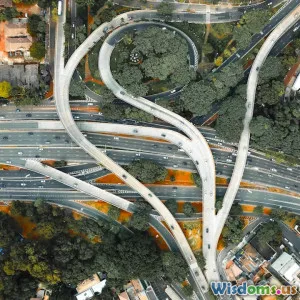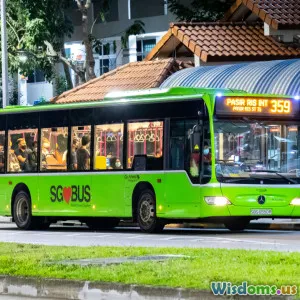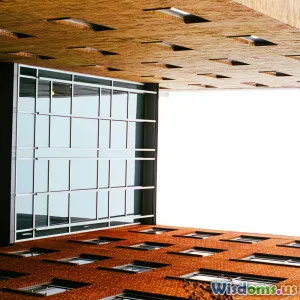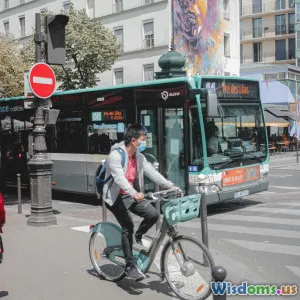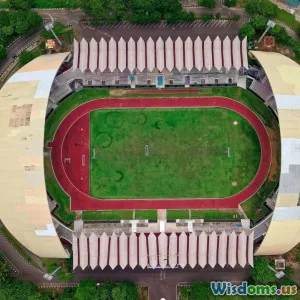
Sustainable Cities of the Future
6 min read Explore innovative strategies for designing sustainable cities that prioritize environmental health, community well-being, and urban resilience. (0 Reviews)
Sustainable Cities of the Future
Introduction
The rapid growth of urban populations has led to increased pressure on city infrastructures and natural resources. To address these challenges, the concept of sustainable cities has emerged as a guiding principle for urban planners and architects. Sustainable cities aim to create environments that are not only livable and economically viable but also resilient to climate change and environmentally friendly. This article explores innovative strategies and practices shaping the sustainable cities of the future.
The Importance of Sustainability in Urban Design
Sustainability in urban design encompasses a holistic approach that integrates environmental, social, and economic factors. The goal is to create urban spaces that minimize ecological footprints while enhancing the quality of life for residents. According to the United Nations, cities occupy just 3% of the Earth's surface but account for 75% of global CO2 emissions. Hence, transforming urban areas into sustainable entities is crucial for combating climate change and promoting better living conditions.
Key Principles of Sustainable Urban Design
- Energy Efficiency: Implementing energy-efficient systems is vital for reducing overall energy consumption. This includes using renewable energy sources like solar and wind, improving building insulation, and optimizing heating and cooling systems.
- Green Infrastructure: Integrating green spaces such as parks, green roofs, and urban forests improves air quality and provides recreational areas for residents. Green infrastructure also aids in stormwater management, reducing urban flooding.
- Sustainable Transportation: Promoting public transport, biking, and walking can decrease reliance on cars, reducing traffic congestion and emissions. Cities like Copenhagen have successfully implemented extensive cycling networks to encourage bicycle use.
- Waste Management: Developing efficient waste reduction and recycling programs can help cities manage resources more sustainably. Initiatives such as zero-waste programs are gaining traction in urban areas worldwide.
- Community Engagement: Involving local communities in the planning process fosters a sense of ownership and ensures that developments meet the needs and desires of residents.
Innovative Examples of Sustainable Cities
Several cities across the globe are leading the way in sustainable urban design, showcasing innovative practices that set benchmarks for future developments.
1. Curitiba, Brazil
Curitiba is often cited as a model of sustainable urban planning. The city features an extensive bus rapid transit (BRT) system, which has significantly reduced traffic congestion and pollution. Additionally, Curitiba has embraced green spaces, with numerous parks and ecological preservation areas, emphasizing the importance of nature in urban settings.
2. Amsterdam, Netherlands
Amsterdam is renowned for its commitment to sustainability, particularly in transportation. The city has a rich cycling culture, with more bicycles than residents. Amsterdam's integrated public transport system and investments in renewable energy sources, such as wind and solar, further enhance its sustainability efforts.
3. Singapore
Singapore's approach to urban design emphasizes vertical greenery and smart technology. The city-state is known for its innovative use of space, with vertical gardens and green roofs integrated into high-rise buildings. The government also employs smart technologies to monitor and manage urban services efficiently, contributing to a more sustainable urban environment.
Challenges to Achieving Sustainable Cities
While the vision for sustainable cities is clear, several challenges remain:
- Funding and Resources: Implementing sustainable practices often requires significant investment. Securing funding can be a challenge, especially in developing countries.
- Political Will: Sustainable urban design requires commitment from local governments and stakeholders. Political obstacles can hinder progress.
- Public Awareness: Educating the public about the benefits of sustainability is essential. Without community support, sustainable initiatives may struggle to gain traction.
Conclusion
The future of urban living hinges on our ability to create sustainable cities that prioritize environmental health, economic viability, and social equity. By embracing innovative design principles, leveraging new technologies, and fostering community engagement, we can transform our urban areas into vibrant, resilient spaces that thrive in harmony with nature. As we move forward, the lessons learned from pioneering cities will guide the development of sustainable urban environments that benefit everyone.
Rate the Post
User Reviews
Popular Posts











